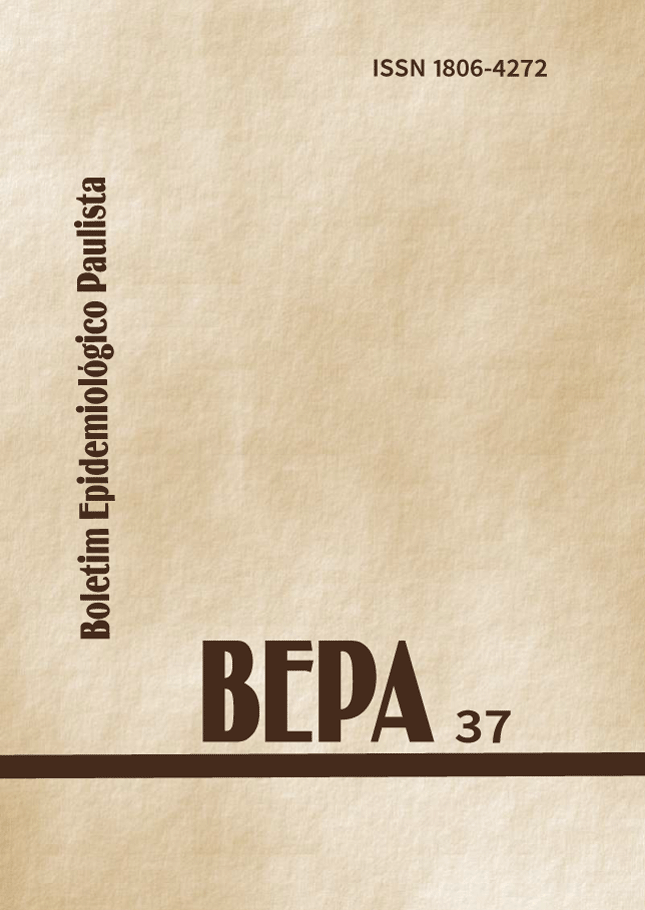Abstract
This paper describes the production and the use of new monoclonal antibodies for the detection of the bacteria Vibrio cholerae , Escherichia coli O157:H7 as well as for the toxins Stx1 e Stx2 in food samples. Immunological tests like Dot-ELISA - Capture and agglutination ELISA, employing latex particles liked to the monoclonal antibodies produced are under evaluation. Limits and microbiological patterns that must be adopted to warrant correct interpretation of the results of microbiological results, factors contributing to the occurrence of foodborne diseases outbreaks demand the implantation of detection systems of high specificity and sensibility, which are characteristic of these immunological techniques. Data indicate that Dot-ELISA, Capture ELISA Agglutination essays and latex particles are appropriate, depending on the food sample under analysis.
References
Riley LW, Remis RS, Helgerson SD, McGee HB, Wells JG, Davis BR, Heberts RJ, Olcott HM, Johnson LM, Hargrett NT, Blake PA, Cohen ML. Hemorrhagic colitis associated with a rare Escherichia coli serotype. N Engl J Med 308: 681-685, 1983.
Rangel JM, Sparling PH, Crowe C, Griffin PM, Swerdlow DL. Epidemiology of Escherichia coli O157:H7 outbreaks, United States, 1982-2002. Emerg Infect Dis 11: 603-609, 2005
Tavares, MT, Serafini, AB. Carnes de Hambúrgueres prontas para consumo: Aspectos legais e riscos bacterianos. Rev.Pathol.Trop 35:1-21, 2006
Centers for Disease Control and Prevention (CDC). Foodborne outbreak response and surveillance unit. U.S. Foodborne disease outbreaks. June, 2004. Disponível em: http://www.cdc.gov/foodborneoutbreaks/us_outb. htm. Acesso em: 6 de janeiro de 2007.
Silveira NFA, Silva N, Contreras C, Miyagusku L, Baccin MDF, Koono E, Beraquet NJ. Occurence of Escherichia coli:H7 in hamburgers produced in Brazil. J Food Prot 62: 1333-1335, 1999.
Silva N, Silveira NFA, Contreras C, Beraquet NJ. Ocorrência de Escherichia coli O157:H7 em produtos cárneos e sensibilidade dos métodos de detecção. Ciênc Tecnol Aliment 21: 223-227, 2001.
Brasil. Ministério da Saúde. Resolução RDC nº 12 de 02 de janeiro de 2001 da Agência Nacional de Vigilância Sanitária–ANVISA. Regulamento técnico sobre padrões microbiológicos para alimentos. Diário Oficial da União. Brasília, 10 jan. 2001.
World Health Organization (WHO). WHO Media Centre. Fact Sheet No 237. Food safety and foodborne illness. January 2002. Disponível em: http://www.who.int/mediacentre/factsheets/fs237/en/. Acesso em: 06 de janeiro de 2007.
Buzby JC. Older adults at risk of complications from microbial foodborne illness. Food Review 25: 30-35, 2002.
Unnevehr L, Roberts T, Custer C. New pathogen testing technologies and the market for food safety information. AgBioForum 7: 212-218, 2004.
Jay JM. Microbiologia de Alimentos. 6. ed., Porto Alegre: Artmed, 2005.
Forsythe SJ. A flora microbiana dos alimentos. Microbiologia da Segurança Alimentar. 1. ed., Porto Alegre: Artmed, 2002.
Taege A. The Cleveland Clinic. Disease Management Project. Medicine Index. Infectious Diseases. Foodborne disease. February 2004. Disponível em: http://www.clevelandclinicmeded.com/diseasemanagement/ infectiousdisease/foodborne/foodborne.htm. Acesso em: 6 janeiro 2007
Sobel J, Mixter CG, Kolhe P, Gupta A, Guarner J, Zaki S, Hoffman NA, Songer JG, Fremont-Smith M, Fischer M, Killgore G, Britz PH, MacDonald C. Necrotizing enterocolitis associated with Clostridium perfringens type A in previously healthy north american adults. J Am Coll Surg 201: 48-56, 2005
Adak GK, Meakins SM, Yip H, Lopman BA, O’Brien SJ. Disease risks from foods, England and Wales, 1996- 2000. Emerg Infect Dis 11: 365-372, 2005.
Picchi V. Higienização em estabelecimentos de abate de bovinos. Revista Nacional da Carne, v. 332, Outubro de 2004. Disponível em: http://www.dipemar.com.br/carne/332/materia_especial_carne.htm. Acesso em: 21 janeiro de 2007.
Gill CO, Bryant J, Badoni M. Effects of hot water pasteurizing treatments on the microbiological condition of manufacturing beef used for hamburger patty manufacture. Int J Food Microbiol 63: 243-256, 2001
Silva CRB, Barros JJC, Miranda FA, Rossi DA. Efeito do congelamento e resfriamento na preservação de Escherichia coli (ATCC25922) e Staphylococcus aureus (ATCC9801), inoculadas em carne moída bovina estocada para investigação de surtos de toxinfecção alimentar. Rev Hig Alimentar 19: 95-98, 2005
Fattori FFA, Souza LC, Braoios A, Ramos APD, Tashima NT, Neves TRM, Barbosa RL. Aspectos sanitários em “trailers” de lanche no município de Presidente Prudente, SP. Rev Hig Alimentar 19: 54-62, 2005
Macdonald C, Drew J, Carlson R, Dzogan S, Tataryn S, Macdonald A, Ali A, Amhed R, Easy R, Clark C, Rodgers F. Outbreak of Escherichia coli O157:H7 leading to the retall of retail ground beef – Winnipeg, Manitoba, May1999. CCDR 26-13, 2000
Kassenborg HD, Hedberg CW, Hoekstra M, Evans MC, Chin AE, Marcus R, Vugia DJ, Smith K, Ahuja SD, Slutsker L, Griffin PM. Farms visits and undercooked hamburgers as major risk factors for sporadic Escherichia coli O157:H7 infection: data from a case-control study in 5 FoodNet sites. Clin Infect Dis 38: S271-278, 2004.
Wen Q, McClane BA. Detection of enterotoxigenic Clostridium perfringens type A isolates in american retail foods. Appl Environ Microbiol 70: 2685-2691, 2004.
Câmara SAV. Surtos de toxinfecções alimentares no Estado de Mato Grosso do Sul, 1998-2001. Campo Grande [Monografia de Especialização em Saúde Pública – Escola de Saúde Pública Dr. Jorge David Nasser/ MS, 2002.
Reichert JM. Trends in development and approval times for new therapeutics in the UnitedStates.Nat Rev Drug Discov. 2:695-702, 2003.
Reichert JM. Therapeutic monoclonal antibodies: trends in development and approval in the US.Curr Opin Mol Ther. 4:110-8, 2002.
Reichert JM. Monoclonal antibodies in the clinic.Nat Biotechnol. 19:819-22, 2001. 27. Humphreys DP, Glover DJ. Therapeutic antibody production technologies: molecules, applications,expression and purification.Curr Opin Drug Discov Devel. 4:172-85, 2001.
Ristori,, C. A, Rowlands, R. E G, Jakabi, Miyoko , Gelli D , Scolla, M CG, De Gaspari, E.N. Detecção de Vibrio cholerae 01 em ostras utilizando anticorpo monoclonal em ensaio de aglutinação. Rev.Inst.Adolfo. Lutz, 65:127-132,2006
De Gaspari E.N, Ristori ,C A, Rowlands, R E G , Irino,K, Torres, D,D , Tamplin,M. Aplicação de Anticorpos Monoclonais na Detecção de Enteropatógenos em Amostras de Origem Clínica, Alimentar e Ambiental para a Produção de Kits para Imunodiagnóstico. Bepa,ed.novembro,2006,Volume3,Número35 http://www.cve. saude.sp.gov.br/agencia/bepa 5 )

This work is licensed under a Creative Commons Attribution 4.0 International License.
Copyright (c) 2007 Ruth E G Rowlands, Christiane A Ristori, Tatiane Ferreira, André Yoshio Yto, Daniela de Lima Franco, Monica C G Scola, Mioko Jakabi, Dilma S Gelli, Mark Tamplin, Tulio N. Cunha, Elizabeth N. De Gaspari
